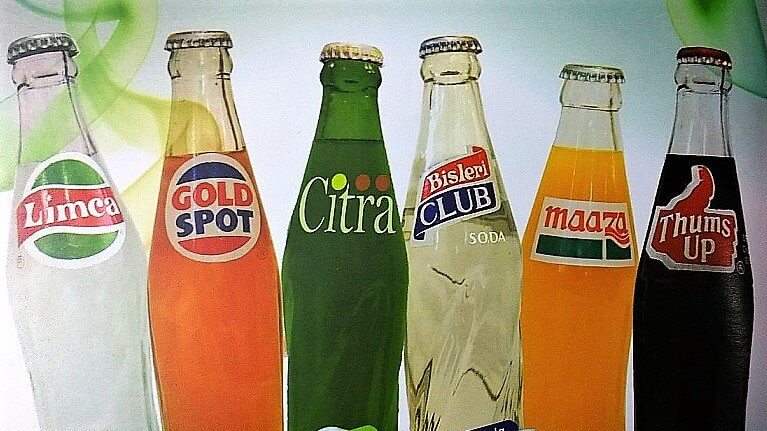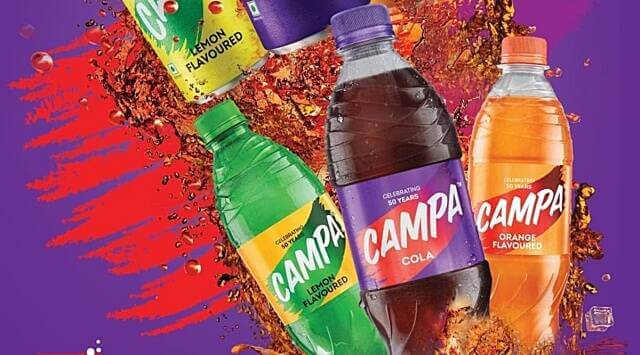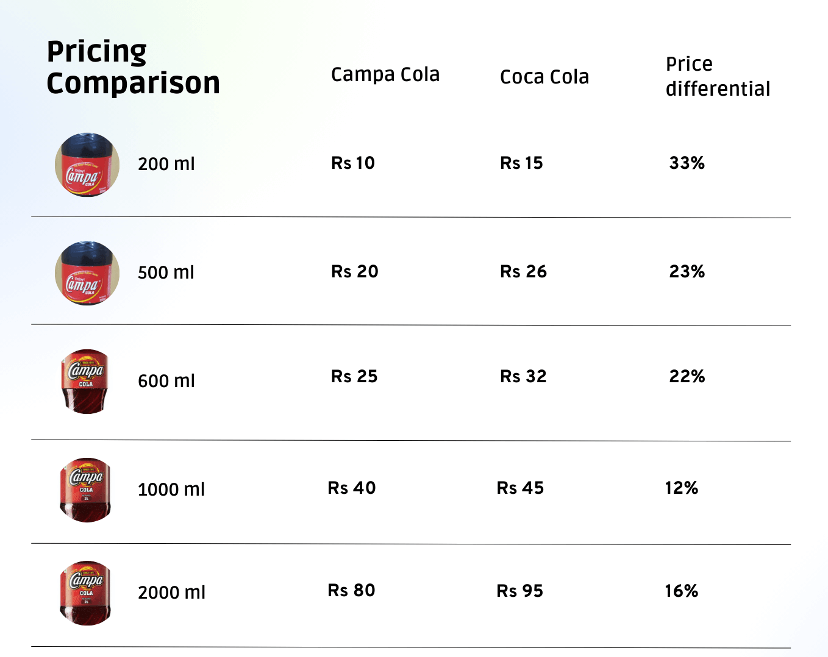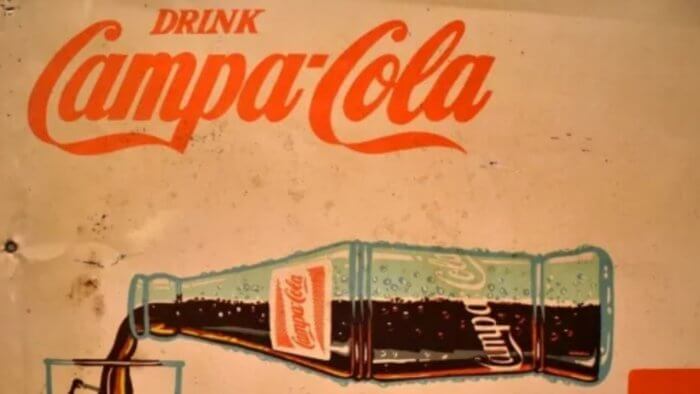The revival of Campa Cola, an erstwhile famous Indian cola brand recently bought by Reliance industries for Rs. 22 Cr, has been making a lot of news these days.
While the brand Campa Cola is mostly unknown to Indians under 30, the news of its launch has rattled the cages at the Coca-Cola and Pepsi offices.
There’s good reason for them to be worried.
And that reason is beyond the nostalgic fervour that Campa Cola evokes.
First, a bit of history
In the 70s and 80s when Coca-Cola and Pepsi waged their legendary ‘Cola wars’ globally, their Indian situation was a bit different.
Both Coca-Cola and Pepsi entered the Indian market in the late 40s/early 50s and quickly moved to establish market dominance.
However, Pepsi couldn’t sustain its initial traction and by 1962, had gone down in sales. It stopped its Indian business soon after. Coca-Cola enjoyed a near monopoly for the next 15 years, growing from strength to strength, primarily in the urban markets.
However, that was soon to come to an end, in an incident that also led to the rise of a new homegrown Cola brand.
Two cola brands created by politics
For governments with socialist inclinations, Coca-Cola symbolized ‘capitalism in a bottle’ and the India of 70s was no different. The legend goes that in discussions to oust Coca-Cola from the Indian market, the popular rhetoric was: “While only 10% of India’s villages have safe drinking water, 90% have access to Coca-Cola”- this speaks of deep penetration and popularity that the brand enjoyed in India during this period.
Amidst the chaos that ensued post-emergency, the government of the day enacted a law that prevented foreign companies from owning more than 40% of any business in India. Coca-Cola would have to effectively give up its ownership, shift its manufacturing base to India and most importantly, surrender its secret recipe.
Unable to comply with these demands, Coca-Cola exited India in 1977.¹
Urban Indians, now accustomed to the taste of Cola, were left bereft of choices. Which was a great opportunity for homegrown brands to exploit.
It is in this market vacuum that Thums Up was launched by Ramesh Chauhan of Parle Group in 1977. With Thums Up, Citra, Gold Spot and Limca, Parle Group had a formidable portfolio in hand.

However, in the same year, Pure Drinks, a company that had made Coca-Cola under contract since 1949, launched a new beverage named Campa Cola, partly to ensure the nearly 2800 employees of the erstwhile Coca-Cola bottling facility did not lose their livelihood in the aftermath of Coca-Cola’s exit.²
With a tagline of “The Great Indian Taste”, the brand sought to appeal to the popular consumer emotions and nationalistic fervour espoused by the government of the day. Campa Cola had a flying start- its launch ad gave break to a 15-year-old Salman Khan and was among the first ads of its times to be shot underwater ³:
Over the next nearly two decades, both Pure Drinks and Parle Groups’ portfolios continued to grow in India. However, this growth story was to take on an unexpected divergence in the early 90s.
Return of the behemoths
With economic liberalization sweeping the Indian industry in the early 90s, both Pepsi and Coca-Cola made a comeback in India. With that, the market became quite hot, and a lot of the indigenous beverage brands struggled. They simply couldn’t compete with the advertising war chest and the global aspiration these brands brought.
Campa Cola wound up operations and exited the scene quietly in 1999.
Parle Group’s brand portfolio was brought over by Coca-Cola for $40 Million- instantly giving it 50% market share of the Indian soft-drinks market. Coca-Cola then proceeded to quietly kill them off, substituting Citra and Gold Spot with its own brands Sprite and Fanta respectively.
It also tried to substitute Thums Up with Coke, but Thums Up refused to go quietly.
The story of how a distinctive taste and solid distribution helped Thums Up stand its ground despite reduced marketing budgets (1995 ad budget for Thums Up was Rs. 1.8Cr compared to Rs. 200 Cr each for Coca-Cola and Pepsi)⁴- and how Coke finally acknowledged the brand strength and supported it with some great marketing to turn it into the first billion $ brand from its Indian portfolio is a case study that has been duly chronicled by both academicians and brand strategists.
Reliance – the lightning before the thunder

With solid product differentiators and deep distribution and a strong consumer appeal, Thums Up was able to stand its ground. Campa Cola is expected to be on a firm footing on at least one of these factors- distribution, thanks to the backing of Reliance.
With a well-oiled supply chain in place and a solid reputation of being the master of scale, the company doesn’t need to build a distribution network from scratch and that’s a massive advantage to begin with.
Then there is the question of aggression and pricing. And Reliance isn’t short on either.
In 2016, the launch of Reliance Jio disrupted mobile internet, and lucrative per-day GB plans have had a ripple effect on not only the telecom category but also on the entire e-commerce ecosystem in India.
And in 2022, it acquired the OTT rights for the upcoming IPL and promised to make IPL Streaming free for users on Jio Cinema!
Reliance has planned the launch of Campa Cola for Summer 2023 (even though they had acquired the brand in Aug 2022) for a reason. Summer is the season of peak sales of soft drinks, and IPL is a tentpole event that drives both category consumption and awareness. Though there is no formal announcement yet rumours are rife that “company has planned a number of activities around the IPL.” ⁵
Finally, across SKU sizes, Campa Cola will be priced anywhere from 16% to 33% cheaper vs. established incumbents. This is especially critical in the entry-level pricing, which is what will drive disproportionate trials in the initial months:

In a price-sensitive category like soft drinks, this initial trial can be a massive accelerant for Campa Cola’s adoption.
Executives at Pepsi and Coke seem to have taken note. This is evident from their mostly circumspect quotes to news outlets:
Ravi Jaipuria, chairman of PepsiCo’s listed bottling partner Varun Beverages, said the Indian market is “big enough and has a lot of buoyancy”.
“Reliance has distribution muscle, and we will do what is good for the market and for us,” he told Economic Times. “As far as pricing goes, it is not an independent decision which we can take on our own and involves several stakeholders.”
“The emergence of more players in the market presents a great opportunity for further investments to develop the market and provide consumers with innovations that evolve the category and ultimately benefit them,” a Coca-Cola spokesperson said in response to ET’s query. “Coca-Cola will continue to invest in building capability and capacity in the country,” she added.
What’s common in both these answers? A feeling that the relaunch of Campa Cola by Reliance might pose a credible challenge to the duopolistic market. This is the first time since the 90s that these behemoths seem to be under pressure from a new brand.
But is the road ahead smooth for Reliance?
Distribution was just one factor that helped Thums Up stand its ground. The other, and probably more important factor was its consumer traction- coming from a signature taste that carried spicy undertones. Coke did well to fortify the positioning of Thums Up- a ‘macho-drink’ that one needs to grow up to. This has served the brand quite well.
Here, it’s a bit of a mixed bag for Campa Cola.
Campa Cola as a fizzy drink has proven its appeal to Indian consumers in the past, so Reliance hopefully won’t have to tinker around with its formulation. That’s the advantage of buying an existing formula – you don’t have to create a beverage for the Indian palette from scratch.
However, we do not know yet if the taste alone is distinctive enough to inspire proactive repeats. After all, in the 80s, this very product lost out to the marketing machine of Coke and Pepsi.
Another advantage of Campa Cola is that the brand still evokes nostalgia among the generation born and brought up in the 80s. Bringing back an indigenous brand from that era which was almost killed by MNC giants makes for a great underdog comeback story that can tap into the emerging trend of proudly ‘Made in India’ narrative.

For better or for worse, Reliance is also seen as a quintessential Indian company, built using Indian ingenuity and hustle and now standing up to global MNCs. This can drive up the urge amongst consumers to support the brand.
But these very benefits come with potential downsides too.
First off, consumers for whom the nostalgia of Campa Cola is appealing are already moving away from the category. The fear of ‘unhealthy, sugar-laced drinks’ is real- and hence, while Campa Cola nostalgia might fascinate them or could even instigate initial trials, it is a long shot to assume that it would be enough to change their category perceptions.
Also, Colas were a cool and aspirational product back in the 2000s- when youngsters lacked icons to assert their identity. That’s no longer the case today.
Further, the category codes themselves necessitate the brands to project themselves as icons of urban cool. The incumbents Coke and Pepsi have played this game very well. They have kept pace with evolving consumer landscape- be it roping in the trending celebrities in their communication, or sponsoring the hottest events. So, while the narrative of nativity might sound good, it may not be a strong enough positioning platform to shake up well-entrenched brands in the market.
Of course, the price factor will help. But then, the brand will also need to manage the potential distributor and retailer dissonance accruing from lower margins in a category that already operates on razor-thin margins. This also means that Campa Cola won’t get channel support by merely usurping existing category volume, it will also need to grow the category- which is not an easy task. Unlike, say mobile internet, this isn’t a category with pent-up demand held back due to price barriers.
Finally, both Coke and Pepsi have over time built a formidable fortress. Going by reports, Coke just had a ‘Stellar 2022’ in India, with the brand ‘growing on all dimensions’- with an impressive network of 2.6 million retail outlets. Pepsi on the other hand has 37 manufacturing facilities and 9.25 lakh visicoolers in India- via Varun Beverages- the bottler accounting for 90% of Pepsi’s volumes in India.
Grab your popcorn – the war is about to start
For all their marketing genius and well-entrenched capabilities, Coca-Cola and Pepsi have never tested themselves against the sort of persistence, pricing play, and market aggression of Reliance.
The Cola-Wars has always been a topic of heated discussions and case studies in B-Schools. Will these case studies be rewritten? Because the Indian player challenging the global giants almost 3 decades post their India launch is a different beast from the Parle Group of the 90s.
It will be interesting to see how this Cola war will eventually pan out. This is for sure going to be an interesting summer.
Sources:
- https://medium.com/bc-digest/coca-cola-history-a6c55eb5dfe6
- https://www.businessworld.in/article/History-Of-Campa-Cola-From-Its-Launch-To-End-In-The-Market/05-09-2022-445154/
- https://brandequity.economictimes.indiatimes.com/news/advertising/when-campa-cola-gave-salman-khan-his-first-break/93960429
- https://www.businesstoday.in/latest/corporate/story/tasting-the-thunder-how-thums-up-rose-to-become-a-billion-dollar-brand-325041-2022-03-07
- https://www.thehindubusinessline.com/specials/corporate-file/catch-ipl-on-jio-chilled-campa-in-hand/article66660621.ece
